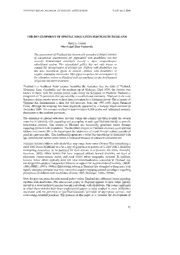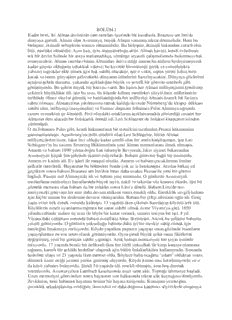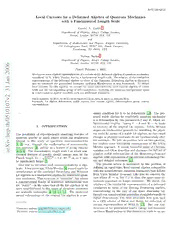
Local Currents for a Deformed Algebra of Quantum Mechanics with a Fundamental Length Scale PDF
Preview Local Currents for a Deformed Algebra of Quantum Mechanics with a Fundamental Length Scale
APS/123-QED Local Currents for a Deformed Algebra of Quantum Mechanics with a Fundamental Length Scale Gerald A. Goldin∗ Department of Physics, King’s College London, Strand, London WC2R 2LS, UK and Departments of Mathematics and Physics, Rutgers University, 118 Frelinghuysen Road, SERC 239, Busch Campus, Piscataway, NJ 08854 USA Sarben Sarkar† Department of Physics, King’s College London, 6 Strand, London WC2R 2LS, UK 0 0 (Dated: February 1, 2008) 2 Weexploresomeexplicitrepresentationsofacertainstabledeformedalgebraofquantummechanics, n considered by R.Vilela Mendes, having afundamental length scale. Therelation of theirreducible a representations of the deformed algebra to those of the (limiting) Heisenberg algebra is discussed, J and we construct the generalized harmonic oscillator Hamiltonian in this framework. To obtain 1 local currents for this algebra, we extend the usual nonrelativistic local current algebra of vector 3 fields and the corresponding group of diffeomorphisms, modeling the quantum configuration space as a commutative spatial manifold with one additional dimension. 2 v PACSnumbers: 02.20.Sv,02.20.Tw,02.40.Gh,03.65.Ca,11.10Nx,11.40Dw,11.40Ex,04.50.th 7 Keywords: Lie algebra deformation, stable algebra, local current algebra, diffeomorphism group, unitary 0 representations 1 0 1 – essary condition for it to be deformable [13]. The pro- 5 posed stable algebra for relativistic quantum mechanics 0 is a deformation by two parameters ℓ and R, which are / h fundamental lengths. Taking ℓ 0 and R leads → → ∞ t I. INTRODUCTION to recovery of the original Lie algebra. Vilela Mendes - p argues on fundamental grounds for describing the physi- e The possibility of experimentally observing features of cal worldby means of a stable Lie algebra,so that small h quantum gravity at small length scales has heightened changesinphysicalconstantsdonotfundamentallyalter : v interest in the study of spacetime noncommutativity the structure. We takeno positionhereonthisquestion, Xi [1, 2]—e.g., through the mathematics of noncommuta- but explore some interesting consequences of the Vilela tive geometry [3], and/or as a feature of string theories Mendes approach. A recent, beautiful paper of Chrysso- r a [4, 5, 6]. The characteristic length scale ℓ at which non- malakos and Okon describes and discusses the full set of classical features of gravity should emerge may be the possible stable deformations of the Heisenberg-Poincar´e Planck length ℓ = ~G/c3 1.6 10−35 m, or it may algebra,withexplanationoftherelevantcohomologythe- P be significantly larger [7]. ∼ · ory and detailed references [14]. p The present article is motivated by the problem of One way to introduce such noncommutativity is alge- defining an equal-time, local current algebra compatible braic. Afewyearsago,VilelaMendes[8]arguedagainfor withthe nonrelativisticquantumkinematicsthatfollows consideration of the combined Heisenberg and Poincar´e from Vilela Mendes’ proposal. Like him we consider the Liealgebrasasakinematicalalgebraforrelativisticquan- case where R but ℓ = 0; then the space-time co- tum mechanics. This structure is “unstable”, but allows → ∞ 6 ordinate operators no longer commute. We clarify the a parameterized family of nontrivial deformations that relation of the irreducible representations of a deformed are “stable”—inthe sense that all the Lie algebrasin an subalgebra to those of the limiting Heisenberg algebra, open neighborhood in the space of structure constants concentrating on the case of one space dimension (al- are mutually isomorphic [9, 10, 11, 12]. The nontrivial thoughourconsiderationsgeneralizestraightforwardlyto second cohomology of the original Lie algebra is a nec- higher dimensions). The limit procedure here goes back to a 1970 scheme of Barut and Bohm for reduction of certain representations of SO(4,2) [15]. But our con- ∗Electronicaddress: gagoldin@dimacs.rutgers.edu struction of the generalizedkinetic energy and harmonic †Electronicaddress: sarben.sarkar@kcl.ac.uk oscillatorHamiltoniansinthisframeworkleadstoanan- 2 swer different from that suggested by Vilela Mendes. [M ,q ] = i(q η q η ) , (3) µν λ µ νλ ν µλ − One way of obtaining local currents for the deformed [M , ] = 0, µν algebraistoextendtheusualnonrelativisticlocalcurrent J algebra (LCA) of scalar functions and vector fields, and where η = diag[1, 1, 1, 1] in units with c = 1. µν − − − the corresponding infinite-dimensional groups of scalar To describe the quantum kinematics of a particle, one functions and diffeomorphisms. In doing this we make typically represents a subalgebra of this Lie algebra by use of an abstract single-particle configuration space, self-adjoint operators in Hilbert space. which is a commutative spatial manifold having one di- While the Lie algebras of Eqs. (1) and Eqs. (2) are mension more than the configuration space for the lim- separately stable, the combined Lie algebra of Eqs. (1)- iting situation with ℓ 0. Thus the deformed (1+1)- (3) is not; so we consider a stable deformation. → dimensional theory entails self-adjoint representationsof an infinite-dimensional Lie algebra of nonrelativistic, lo- calcurrentsfor a(2+1)-dimensionalspace-time(LCA2). A. Deformed Lie algebras for quantum mechanics To be able to recover the usual current algebra (LCA1) in the limit ℓ 0, one may introduce a semidirect sum The relevant deformation is labeled by fundamental → of LCA2 with the algebra of vector fields of the line. lengths R and ℓ, and satisfies brackets where Eqs. (2) The local operators then act in a direct integral of irre- and (3) are unchanged, but Eqs.(1) are replaced by, ducible representations of the global, finite-dimensional deformed Lie algebra. This seems to open up interesting [pµ,qν] = i~ηµν J new possibilities, which we discuss briefly. [q ,q ] = iεℓ2M , µ ν µν − Thepaperisorganizedasfollows. InSec.II,wepresent ε′~2 the necessarybackground—the(ℓ,R)-deformedLie alge- [p ,p ] = i M , (4) µ ν − R2 µν bra of relativistic quantum mechanics, the nonrelativis- ℓ2 tic local current algebra and its relation to Heisenberg [q , ] = iε p , algebra,andthe desirablepropertiesforlocalcurrentsin µ J ~ µ relation to the deformed algebra with ℓ =0. In Sec. III, ε′~ wereviewseveraldifferent, butunitarily6equivalent, self- [pµ,J ] = −iR2 qµ, adjoint representations of the ℓ-deformed Heisenberg al- where ε and ε′ are 1. Evidently as ℓ 0 and R , gebraforthecaseofonespatialdimension—whichisiso- ± → →∞ we recover Eqs.(1)-(3). morphictotheLiealgebraofthegroupofrigidmotionsof ThisLiealgebraisisomorphictotheLiealgebraofthe theplane. Thissubalgebrafortheone-dimensionalprob- orthogonal group in six dimensions, with metric η = lemservesasausefullaboratory. Wewriteexplicitly the ab diag[1, 1, 1, 1,ε′, ε]. Evidently in a self-adjoint unitary operators intertwining the representations. This − − − representation, the q no longer commute with each permitsclarificationofhowanirreduciblerepresentation µ other. Their interpretation as space-time coordinate op- of the usual Heisenberg algebra can be recovered in the erators in such a representation may be questioned [14]; ℓ 0limit. InSec.IV,wediscussthekineticenergyand → but if we maintain this interpretation, Heisenberg-like harmonicoscillatorHamiltonians. InSec.V,weconsider uncertainty relations for these coordinates suggest that firsttheproblemsassociatedwithcurrentslocalizedwith space-time becomes “fuzzy” to order ℓ [16]. respect to the spectrum of the deformed position opera- We remark that in other specific models, the noncom- tor. Then we develop and discuss the extended nonrela- mutativity of the coordinate operators is different. For tivistic local current algebra and diffeomorphism group. example, in the case of a charged particle moving in a plane perpendicular to a magnetic field of magnitude B, in the limit as the mass m 0 we expect, for j,k =1,2, II. BACKGROUND → [q ,q ] = iθ , [q , ]=0, (5) j k jk j J J Introducing the 4-vectorsq and p , µ,ν =0,1,2,3,and µ ν the Lorentz generatorsM , one combines the canonical whereθisaconstantantisymmetricmatrixinverselypro- µν brackets, portional to B. A similar bracket occurs for a bosonic string when there is a background, constant Neveu- [pµ,qν] = i~ηµν , (1) Schwarz2-formintheworldvolumeofaD-brane[17,18]. J [q ,q ] = [p ,p ] = [q , ] = [p , ] = 0, As the parameter ℓ is relevant locally, we shall follow µ ν µ ν µ µ J J Vilela Mendes in focusing on the algebra obtained by with the Lorentz brackets, taking R . Then the brackets involving R in Eqs. → ∞ [M ,M ] = (4) become zero. We now want to concentrate on self- µν ρσ adjointrepresentationsoftheHeisenberg-likesubalgebra, i(M η +M η M η M η ), (2) µσ νρ νρ µσ − νσ µρ− µρ νσ with j,k =1,2,3, and with ε= 1, given by the spatial − by means of the additional brackets, components of Eqs.(2)-(3), together with the brackets, [M ,p ] = i(p η p η ) , [q ,q ] = iℓ2M , µν λ µ νλ ν µλ j k jk − 3 [q ,p ] = iδ ~ , set B Rd, the expectation value (Ψ,ρ(f)Ψ) with re- j k jk J ⊆ ℓ2 specttothesingle-particlewavefunctionΨapproximates [qj,J ] = −i~pj, (6) m χB(x)|ψ(x)|2dx, which is the mass times the usual probability for finding the particle in the region B. If [pj,pk] = [pj,J ] = 0. f(Rx) approaches δ(x x0) for a fixed point x0 Rd, − ∈ The Lie algebra of Eqs. (2)-(3) and (6) represents the then (Ψ,ρ(f)Ψ) approaches m Ψ(x0)2. We also see | | global symmetry of the deformed quantum theory. We howtheHeisenbergalgebraisrecovered—iff(x)approx- desire,however,toincorporateadescriptionoflocal sym- imates the coordinate function xj, then ρ(f) approxi- metry, for which we turn to local current algebra. mates the moment operator mqj acting in L2dx(Rd) via multiplication by mx . Similarly, if g(x) is taken to ap- j proximate a constant vector field in the j-direction, so B. Equal-time local current algebra that (let us say) g (x) 1 with g (x) = 0 for k = j, j k then J(g) i~∂/∂x ,∼which is the action of the6mo- j In standard, nonrelativistic quantum theory, the mentum op∼era−tor pj in L2dx(Rd). second-quantized field ψ(x,t) and its adjoint ψ∗(x,t), Inshort,theLCAinthe1-particlerepresentation,with for x Rd, are operator-valued distributions in Fock suitable(global)choicesoftestfunctions,allowsrecovery space.∈These satisfy thebequal-time canonical cobmmuta- of the usual quantum-mechanical representation of the tion ( ) or anticommutation (+) relations, finite-dimensional subalgebra of Eqs. (1) having spatial − indices. Likewise, generators of spatial rotations may be ψ(x),ψ∗(y) = δ(x y); (7) recovered—e.g., in the 1-particle representation in three ±(fixedt) − space dimensions, the operator for orbital angular mo- h i mentum about the x -axis is approximated by choosing the argumenbt t isbhenceforth suppressed. Then the lo- 3 g (x) = x , g (x) = x , and g (x) = 0 inside a large cal,fixed-timemassdensityρ(x)andmomentumdensity 1 − 2 2 1 3 compact region x R; outside this region, g(x) falls J(x) are operator-valued distributions, defined formally | | ≤ smoothly to 0. Then J(g) approximates the operator by ~M =L =(q p) e acting in L2 (R3), where e is 12 3 × · 3 dx 3 ρ(x) = mψ∗(x)ψ(x) , the unit vector in the x3-direction. ~ The study of inequivalent, self-adjoint representations J(x) = ψ∗(x) ψ(x) ψ∗(x) ψ(x) . (8) of this infinite-dimensional algebra has turned out to be 2ib b ∇ − ∇ apowerfulmethodforclassifying,andinsomecasespre- n h i o These obey a cerbtain singbular Lie ablgebra,bwhich is in- dicting, kinematical possibilities for quantum systems. dependent of whether the original field is bosonic or Thesepossibilitiesincludethe usualN-particlerepresen- fermionic [19]. Define tations, N = 1,2,3,..., satisfying bosonic or fermionic statistics for N 2 in more than one space dimen- ≥ sion. They alsoinclude particlesystemsobeyinganyonic ρ(f) = ρ(x)f(x)dx, statistics in two-dimensional space [21, 22, 23, 24, 25] Z d or other exotic statistics, particles with spin [26, 27], J(g) = J (x)g (x)dx, (9) compositesystemshavingdipoleorhighermultipolemo- k k Z k=1 ments[28],andinfinite-particleorextendedsystemshav- X ing infinite-dimensionalconfigurationspaces [29, 30, 31]. where f and the components g of g are compactly- k Thisisourmotivationforinvestigatingthepossibilities supported C∞ test functions on Rd. Then one obtains for defining local currents appropriate to the deformed the local current algebra [20], Lie algebraof Eqs.(6). The goalis to obtain an infinite- dimensional, local Lie algebra that is a deformation or [ρ(f ),ρ(f )] = 0, 1 2 extension of the LCA of Eqs. (10), which, with suitable [ρ(f),J(g)] = i~ρ(g f) , (10) ·∇ choices of test functions in a 1-particle representation, [J(g1),J(g2)] = i~J([g1,g2]) ; allows recovery of a standard representation of Eqs. (6). − Thentheunitarilyinequivalentrepresentationsofthede- where [g ,g ] = g g g g is the usual Lie 1 2 1 ·∇ 2 − 2 ·∇ 1 formedLCAshoulddescribe kinematicalpossibilities for bracket of vector fields. anonrelativisticversionofthedeformedquantumtheory. In the 1-particle Hilbert space L2 Rd , we have the dx Thus in Sec. III, we shall discuss some different ways of self-adjoint representation (cid:0) (cid:1) writing standard representations of Eqs.(10). ρ(f)Ψ(x) = mf(x)Ψ(x), (11) Notethatwe mayintroduceanoperator-valueddistri- ~ bution Q(f,g) acting in L2dx Rd , defined by J(g)Ψ(x) = g(x) Ψ(x)+ [g(x)Ψ(x)] , 2i{ ·∇ ∇· } (cid:0) (cid:1) Q(f,g)Ψ = f(x)Ψ + where m is the particle mass. Now as the test function 1 f(x)approachesanindicatorfunctionχ (x)foraBorel g(x) Ψ(x) + [g(x)Ψ(x)] . (12) B 2i{ ·∇ ∇· } 4 Then Q is a self-adjoint representation of the natu- Thealgebraisrepresentedherebythegeneratorsofrigid ral semidirect sum of the commutative Lie algebra of motions of Rd+1, i.e., the (d+1)-dimensional Euclidean compactly-supported,real-valuedC∞ functionsf onRd, groupE whichis a semidirectproductof the transla- d+1 with the Lie algebra of vector fields g on Rd; namely, tions androtationgroups. Note thatthe coordinatew is like a hidden dimension in Kaluza-Klein theory [32]; its [(f ,g ),(f ,g )]=(g f g f , [g ,g ]). (13) 1 1 2 2 2·∇ 1− 1·∇ 2 − 1 2 presencehereillustratestheideathatsometimesnoncom- The physical constants m and ~ do not enter (12), but mutative structures can serve as alternatives to hidden Eqs. (11) follow from it when we set ρ(f) = mQ(f,0) dimensions. The Hilbert space on which the differential and J(g)=~Q(0,g). operatorsof Eqs.(17) act as self-adjoint operatorsis the ralTshemegidrioruepcttphraotdiuscatsso(cRiadt)edDwiiffthc(ERqd.),(1w3h)eirsethe(Rnda)tuis- ΦspaocneRHd+=1 tLh2daxtdwar,ecosqnusiasrtein-igntoefgcroamblpelewxi-tvhalrueesdpefcutntcotiothnes the groupof compactlyDsuppo×rted, real-valuedCD∞ func- Lebesgue measure ( dj=1dxj)dw. tions on Rd under pointwise addition, and Diffc(Rd) is But the representation of Eqs. (17) has the drawback thegroupofcompactlysupporteddiffeomorphismsofRd that when we take Qthe limit as ℓ 0, we do not re- → under composition [31]. These groups are endowed with cover the usual representation of the Heisenberg algebra the topologyofuniformconvergenceinallderivativeson withoutdeformation;ratherq(1) and (1) bothtendfor- compact sets. The group law, for f1,f2 (Rd) and mallyto0. WethereforeconsijderanaJlternative,denoted φ1,φ2 Diffc(Rd), is ∈ D with the superscript (2), obtained by introducing a uni- ∈ tary multiplication operator U in the Hilbert space . (f1,φ1)(f2,φ2)=(f1+f2◦φ1,φ2◦φ1) , (14) Defining U Φ(x,w)=exp[ iwℓ/ℓ]Φ(x,w), we set H ℓ − where denotes composition. Give◦n the compactly-supported, C∞ vector field g on (qj(2),Mj(k2),J(2),p(j2))=Uℓ(qj(1),Mj(k1),J(1),p(j1))Uℓ−1; Rd, there exists a unique, one-parameter group of C∞ (18) diffeomorphisms φg(x), a R, such that then we have a ∈ ∂φg(x) (2) ∂ ∂ ∂aa =g(φag(x)), (15) qj = xj +iℓ(cid:18)w∂xj −xj∂w(cid:19) , wunitihtarthyerienpirteiaslenctoantdioitnioUn(φfag)=V0((φx)) ≡ofxD.(IRnda)×cDonifftincu(Roud)s,, Mj(k2) = −i(cid:18)xj∂∂xk −xk∂∂xj(cid:19) , (19) the local currents are the self-adjoint generators of 1- ∂ (2) = I iℓ , parameter unitary subgroups; so that J − ∂w ∂ U(f) = exp[(i/m)ρ(f)]=exp[iQ(f,0)], p(2) = i~ . V(φg) = exp[(is/~)J(g)]=exp[iQ(0,g)]. (16) j − ∂xj s Now the operators smoothly go over to the standard The method of induced representations, and other tech- Heisenberg representation as ℓ 0. This representation niques of unitary grouprepresentation,have been exten- → is also given in [8]. sively used in the study of the local current algebra. Let us introduce two corresponding unitarily equiva- lent representations obtained by Fourier transformation. As usual, we have the unitary operator III. SOME UNITARILY EQUIVALENT REPRESENTATIONS : =L2 =L2 , F H dxdw → H dkxdkw Let us now turn to some representations of the spatial given by b componentsofEqs.(2)-(3),takentogetherwithEqs.(6). [ Φ](k ,...,k ,k )=Φ(k ,...,k ,k )= In d space dimensions, there is a natural representation F 1 d w 1 d w by derivations over the (commutative) manifold Rd+1, with globalcoordinates (x ,x ,...,x ,w). Labeling this 1 d+1 ∞ ∞b 1 2 d dx dx dw (20) representationwith the superscript (1), it is given by [8] √2π ··· 1··· d · (cid:18) (cid:19) Z−∞ Z−∞ ∂ ∂ (1) qj = iℓ(cid:18)w∂xj −xj∂w(cid:19) , ·Φ(x,w)exp[−ix·kx−ikww], Mj(k1) = −i xj∂∂x −xk∂∂x , (17) wvahreiareblkexs t=o(xk1a,n.d..w,krde)sapnedctkivwelayr.eTthheenFosuetrtiienrgconjugate (cid:18) k j(cid:19) (1) = iℓ ∂ , (qj(1),Mj(k1),J(1),pj(1)) = F(qj(1),Mj(k1),J(1),p(j1))F−1, J − ∂w (q(2),M(2), (2),p(2)) = (q(2),M(2), (2),p(2)) −1, p(1) = i~ ∂ . bj cjk Jb bj F i ij J i F j − ∂x (21) j b c b b 5 we have via multiplication by ρ2. The eigenvalues ρ2 of C H 0 labelunitarilyinequivalentirreducible representationsof ∂ ∂ qj(1) = iℓ kw∂k −kj∂k , (b24); and we see that the reducible representation given (cid:18) j w(cid:19) by Eqs. (25) acting in is actually a direct integral Mb(1) = i k ∂ k ∂ , (22) (fromρ0 =0 to + ) of iHrreducible representations. The jk − (cid:18) j∂kk − k∂kj(cid:19) irreducible compon∞ent assbociatedwith the eigenvalue ρ02 cJ(1) = ℓkw, consists of operators acting on the Hilbert space Hρ0 p(1) = ~k , of complex-valued functions Φρ0(ψ) on the circle of ra- bj j dius ρ0 centered at the origin in (kx,kw)-space, thatbare while square-integrablewith respectbto the measure dψ. b Letusdenotebyq(1) theself-adjointoperator iℓ∂/∂ψ ∂ ∂ ∂ ρ0 qj(2) = i∂kj +iℓ(cid:18)kw∂kj −kj∂kw(cid:19) , aacdtjioningtninessHtρh0at(dinecfiblnueddesotnheaevdeormywahinereofesessesnetnitailalyl csoelnf-- Mbj(k2) = −i(cid:18)kj∂∂kk −kk∂∂kj(cid:19) , (23) btien,uoreusspaecntdbivdeilffy,ertehnetiambuleltifpulniccatitoionns).opLeertatpoρ(r01s) a~nρd0sJinρ(0ψ1) cJ(2) = I +ℓkw, and ℓρ0cosψ acting in Hρ0. Then a combplete orthbog- pbj(2) = ~kj, oqn(1a)l,bspaesicsififcoarllHyρ0Φis(np)(rψobv)id=ede−binyψth:eneigZen,fuwnhcitcihonmsaoyf ρ0 { ρ0 ∈ } so that in Eqs. (23), as in Eqs. (19), a representation of be regarded asbinfinitely differentiable functions on the b the Heisenberg algebra survives in the ℓ → 0 limit. Of cbircleofradiusρ=bρ0. Thusqρ(01) hastheeigenvaluespec- coursethespectraoftheself-adjointoperatorsrepresent- trum nℓ:n Z ,andthepositionalspectrum(whichis ing the generators of the deformed algebra are the same invari{ant und∈er u}nitary equivalence) is discrete and un- b across all unitarily equivalent representations. bounded in an irreducible self-adjoint representation of We focus now for simplicity on the case d = 1, which the deformed algebra. On the other hand, the spectra of illustrates well the issues discussed in this article. Be- p(1) and (1) are continuous and bounded in absolute causetheeffectivespatialdimensionforthelocalcurrent vaρ0lueby ~Jρρ0and ℓρ respectivelyinsuchanirreducible algebra will be d+1, there is also the interesting pos- 0 0 sibility for d = 1 that features of anyonic statistics of rbepresentatbion. Note that the complex-valued functions on the plane point particles in two-space could occur. We return to given by Φ(n)(ρ,ψ)=e−inψ, n Z, do not belong to this point in the discussion below. ∈ H astheyarenotsquare-integrablewithrespectto ρdρdψ. For d=1, the algebra of Eqs.(6) reduces to Theseareb“non-normalizable”eigenfunctionsoftheoperb- [q,p] = i~ , ator q(1) ofEq.(25). Bona fide square-integrableeigen- Jℓ2 functions of q(1) in take the form f(ρ)e−inψ, where [q,J ] = −i~p, (24) |f(ρb)|2ρdρ is finiteH. Oneregardsthe operator q(1) as [p,J ] = 0. Rtahtoerdsiqrρe(c1)tainntdebgtrhaelcoovrerbresρpoonfdthinegmdeiraescutrianbtleegfiraelldstorbfuoctpuerre- IntherepresentationofEqs.(22),itisusefultointroduce of the Hilbert space is given by polar coordinates (ρ,ψ), with k = k = ρsinψ, k = x 1 w b ∞ ρcosψ, and dkxdkw = ρdρdψ. Then the operators be- = ρρdρ. (27) come H Z0 H ∂ Now, in the represebntations obf Eqs. (24) given by Eqs. q(1) = iℓ , ∂ψ (17) or Eqs. (19) acting in , we have correspond- H p(1) = ~ρsinψ, (25) ing decompositions into direct integrals of irreducible b representations over the parameter ρ [33]. The irre- (1) = ℓρcosψ. ducible representations act in Hilbert spaces , and Jb the operator q(1) [respectively, q(2)] is the dirHecρt inte- The representation by Eqs. (25) in is obviously re- b H gral over ρ of operators q(1) [respectively, q(2)] that ducible, since the subspace of momentum-space wave ρ ρ act in . Let us introduce polar coordinates (r,θ), functions Φ with support between ρ0 abnd ρ0+∆ρ is in- with x H=ρrsinθ and w = rcosθ. Then the correspond- variantunder theseoperators. Indeed,the Casimiroper- ing eigenfunctions of the operator q(1), with eigenval- ator b ρ0 ues nℓ, in an irreducible representation labeled by ρ , 0 1 1 C = p2 + 2 (26) are the functions Φ(n)(r,θ) = einθ : n Z . The ~2 ℓ2 J { ρ0 ∈ } corresponding eigenfunctions of the operator q(2) are ρ0 commutes with all of the generators in Eqs. (24). The einθe−i(r/ℓ)cosθ : n Z . The associated decompo- { ∈ } corresponding operator C defined from Eqs.(25) acts in sition of as a direct integral of with respect to ρ H H b 6 ρdρ, is developed in [33] using the Fourier-Bessel trans- length scale, we need to settle on the form of the kinetic formation. For any element Φ(x,w) of , we have energy part of the Hamiltonian H , and write the total 0 ∞ H Φ(rsinθ,rcosθ) = Φ (rsinθ,rcosθ)ρdρ, where Hamiltonian H = H +V. In [8] it was suggested that 0 ρ 0 for a particle of mass m, we should use H = p2/2m, 0 R 2π ∞ wherepis the generatorappearinginthe algebraofEqs. Φ (rsinθ,rcosθ)=(2π)−1 dθ′ r′dr′ (28) ρ × (24), and that the oscillatorHamiltonian should then be Z0 Z0 H = p2/2m + mω2q2/2. osc Butonereasonablecriterionfordeterminingthechoice Φ(r′sinθ′,r′cosθ′)J ρ r2+(r′)2 2rr′cos(θ θ′) . of H is the physical condition that the time-derivative 0 − − 0 of the particle position should be the particle velocity. h p i Finally we can explore the rather subtle way that That is, we should expect H and H to satisfy, 0 osc the usual, irreducible representation of the Heisenberg 1 1 p algebra must be recovered from irreducible representa- q˙ = [q,H ]= [q,H ]= . (31) tions of the deformed algebra (24), in the limit ℓ i~ 0 i~ osc m → 0; a point that was not addressed by Vilela Mendes. However,we have from Eqs.(24) that With [ Φ](k ,k ) = Φ(k ,k ), it is easy to show that x w x w [ (U ΦF)](k ,k ) = Φ(k ,k +1/ℓ). Thus, considering 1 p2 1 tFhe reℓpresenxtatwion in b xobtwained from Eqs. (23) (with i~ q,2m = 2m(pJ +Jp) , (32) H (cid:20) (cid:21) d=1),theirreduciblebcomponentscontributingtothedi- whichbecomesp/mwhen istheidentity operator,but rectintegralaredefinedbfromwavefunctions havingsup- J not otherwise. To fulfill Eq. (31) we propose to modify port on circles centered at the point k = 0,k = 1/ℓ x w − the form of the kinetic energy term in the Hamiltonian, in (k ,k )-space; i.e., x w so that kx2+ kw+ 1ℓ 2 =ρ20. (29) H0 = 21m p2+ ~ℓ22 (J −I)2 , (33) (cid:18) (cid:19) (cid:26) (cid:27) To obtain the usual representation of the Heisenberg al- whereI istheidentityoperatorinarepresentationofthe gebra as ℓ 0, we must arrive at wave functions in algebra. Notethatthecoefficient~2/ℓ2 in(33)isneeded → the limiting representation that become independent of to obtain the correct commutation relation with q. kw. However, from Eq. (29), we see that if we try to let Now, in the representation q(2), p(2), (2) of the de- ℓ 0 while ρ0 is held fixed, we obtain no such limit; formed algebra given by Eqs.(19), with dJ=1, we have → rather, k becomes arbitrarily large while the operator w p(2) (wh|ich|acts through multiplication by ~k ) remains ~2 ∂2 ∂2 x H(2) = + , (34) bounded. The way out of this difficulty is to allow ρ0 to 0 −2m ∂x2 ∂w2 (cid:26) (cid:27) depend on ℓ. Taking ρ = 1/ℓ in (29), we have for very 0 small ℓ a circle of very large radius tangent to the hori- while in the Fourier transformed representation zontal axis at the origin, approximating the line k =0; q(2), p(2), (2), we have w J indeed, ~2 k = 1 + 1 1 k2ℓ2 12 ; (30) b b b H0(2) = 2m(kx2+kw2). (35) w −ℓ ℓ − x (cid:0) (cid:1) The explicit depenbdence of H0 on ℓ has disappeared. so that for any fixed value of k , k (1/2)k2ℓ 0 Nevertheless,this is the family ofirreducible represen- x w ≈ − x → in the limit as ℓ 0. Thus, traversing a parameterized tations that goes over smoothly to the standard repre- → family of irreducible representations labeled by ρ =1/ℓ sentations ofthe Heisenberg algebraas we take the limit 0 (oratleast,havingthepropertythatρ tendstoward1/ℓ ℓ 0, with ρ = 1/ℓ. Returning to the discussion fol- 0 0 → asℓ 0)istheappropriatewaytoobtaintheHeisenberg lowing Eq.(30), we have from Eq.(35), → algebra in the limiting irreducible representation. Moreover, the condition ρ = 1/ℓ allows the opera- H(2) (~2/2m)[k2+(ℓ2/4)k4], (36) tor p(2) (whose spectrum is b0ounded by ~ρ ) to become 0 ≈ x x 0 unbounded as desired when ℓ 0. so that H(2)b (~2/2m)k2 as ℓ 0. → 0 → x → Now the oscillator potential, and other potentials of the formbV(q), commute with q; so that [q,H0 +V] = IV. THE KINETIC ENERGY AND HARMONIC [q,H ], and it is appropriate to take the harmonic os- 0 OSCILLATOR HAMILTONIANS cillatorHamiltonianfordeformedquantummechanicsto be H =H +mω2q2/2,with H as in Eq.(33). From osc 0 0 To investigate in detail the quantum-mechanical behav- (19), however, we see that the potential energy term no ior of a particle system described by the deformed alge- longer acts via multiplication in L2 , but as a differ- dxdw bra, such as the harmonic oscillator with a fundamental ential operator via further derivative terms. 7 V. DISCRETIZED AND EXTENDED LOCAL Introduce the local currents CURRENT ALGEBRAS ∞ 1 J (h)= h(nℓ) p nℓ nℓ + nℓ nℓ p (41) p In this section we explore two approaches to the intro- 2 { | ih | | ih | } n=−∞ duction of local currents. X e Inthefirstapproach,weinterpretlocalitywithrespect and toabasisofeigenvectorsofqinanirreduciblerepresenta- ∞ tionofthe deformedHeisenbergalgebra(24). This leads 1 J (r)= r(nℓ) nℓ nℓ + nℓ nℓ , to discretized mass and momentum density operators; J 2 {J | ih | | ih |J } n=−∞ i.e., a theory on a lattice. X (42) Inthesecondapproach,weinterpret“locality”withre- e whereh(nℓ) (1/2)[h(nℓ)+h((n+1)ℓ)]andr(nℓ) spect to the (xw)-space on which representations of (24) ≡ ≡ (1/2)[r(nℓ) + r((n+1)ℓ)] are also taken to be com- are modeled. Here we consider two possibilities. The pactly supported. As eh(nℓ) aned r(nℓ) approximate the first is to work straightforwardly with the nonrelativis- tic current algebra in two-dimensional space (LCA2) to functioenthatiseidentically1,sodo h(nℓ) and r(nℓ);then describe the one-dimensional, deformed quantum kine- Jp(h) approximates p,eJJ (r) apperoximates , and the J global algebra is recovered. matics,whilethesecondistointroduceasemidirectsum From Eqs.(39)-(42), we find of LCA2 with the algebra of vector fields on the line. In the discussion,we note the tension occurringbetween locality and irreducibility. J (h) = ~ρ0 ∞ h(nℓ) nℓ (n+1)ℓ p 2i {| ih | n=−∞ X A. Locality with respect to the discrete positional spectrum (n+1)ℓ nℓ , (43) −| ih |} In an irreducible representationof Eqs.(25), the spec- ∞ trum of the self-adjoint operator representing the gen- ℓρ erator q is discrete, given by nℓ for n Z; write the JJ (r) = 20 r(nℓ){|nℓih(n+1)ℓ| corresponding eigenvector as nℓ . We s∈hall then write n=X−∞ | i q nℓ =nℓnℓ , and | i | i ∞ ∞ + (n+1)ℓ nℓ . (44) | ih |} q = nℓnℓ nℓ , I = nℓ nℓ . (37) | ih | | ih | For the Lie algebra of currents generated by these oper- n=−∞ n=−∞ X X ators, in the irreducible representation labeled by ρ , to 0 The correspondinglocalmassdensity operator Jq takes be local, we need the commutator brackets of the opera- the form tors J (g), J (h), and J (r) given by Eqs. (38), (43), q p J ∞ and (44) to yield similarly local expressions. These ex- J (g)=m g(nℓ) nℓ nℓ , (38) pressions are all linear combinations of operators of the q | ih | n=−∞ form nℓ nℓ, nℓ (n+1)ℓ, and (n+1)ℓ nℓ. X | ih | | ih | | ih | In fact, we have where in analogy with the continuum case, the real- valued function g has compact support; i.e., for some [J (g ),J (g )]=0, (45) q 1 q 2 N > 0, g(nℓ) = 0 whenever nℓ > Nℓ. When g(nℓ) | | approximates the function nℓ, J (g) approximates the q moment operator mq. When g(nℓ) 0 ( n Z), J (g) m~ ≥ ∀ ∈ q [J (g),J (h)]= i J (r) , (46) isapositiveoperator. Wheng(nℓ)approximatesthecon- q p − ℓ J stant function 1, J (g) approximatesthe mass times the q identity operator. As we are in a representation of the where r(nℓ)=h(nℓ) g(nℓ) g([n+1]ℓ) , and { − } local currents describing a single particle, we can inter- pret(1/m)Jq(g)asaspatialprobabilitydensityoperator [Jq(g),JJ (r)]=im~ℓJp(h) , (47) averagedwith g(nℓ). Eqn.(25) implies where h(nℓ) = r(nℓ)(g(nℓ) g([n+1]ℓ)), which thus − ~ρ far are satisfactorily local. But other commuta- 0 hnℓ|p|mℓi= 2i (δn+1,m−δn−1,m) (39) tors, such as [Jp(h),JJ (r)], generate terms of the form (n+1)ℓ (n 1)ℓ and (n 1)ℓ (n+1)ℓ, so and | ih − | | − ih | that successive commutators generate additional terms ℓρ (n m)ℓ (n+m)ℓ and (n+m)ℓ (n m)ℓ, for nℓ mℓ = 0 (δn+1,m+δn−1,m). (40) |arbi−trary imh Z. T|herefore|, to closeihthe−Lie al|gebra h |J | i 2 ∈ 8 of these currents, one is forced to include new basis ele- ℓ2ρ20 g(nℓ) (n+2)ℓ nℓ nℓ (n+2)ℓ ments in the (already infinite-dimensional) current alge- − 4 {| ih |−| ih |} n bra, having more general forms; e.g., X ∞ s(nℓ,mℓ) (n+m)ℓ (n m)ℓ +ℓρ0 g(nℓ) (n 1)ℓ nℓ nℓ (n 1)ℓ {| ih − | ·{| − ih |−| ih − |} n,mX=−∞ Xn (n m)ℓ (n+m)ℓ , +ℓρ g(nℓ) (n+1)ℓ nℓ nℓ (n+1)ℓ ±| − ih |} 0 ·{| ih |−| ih |} n wheres is a compactlysupportedfunction onthe square X lattice of points (nℓ,mℓ). Such currents are nonlocal in the positional eigenvalues, since (n m)ℓ and (n+m)ℓ ℓ2ρ2 − = 0 (g(nℓ) g((n 2)ℓ)) becomearbitrarilyfarapart. Thissortofbehaviorbythe − 4 − − · commutation relations of discretized local derivatives is Xn well-known in the context of lattice models. Beforeleavingthe discussionofthediscretizedcurrent nℓ (n 2)ℓ + (n 2)ℓ nℓ algebra,itisworthremarkingthatwedohavewithinthis ·{−| ih − | | − ih |} framework an equation of continuity for the deformed quantumtheory,relatingthetime-derivativeofJq tothe +ℓρ0 (g(nℓ) g((n 1)ℓ)) spatial divergence of J . Taking the Hamiltonian H to − − · p n be H +V(q), with H given by Eq.(33), we have X 0 0 1 m ∞ nℓ (n 1)ℓ + (n 1)ℓ nℓ . J˙ (g) = [J (g),H] = g(nℓ) nℓ nℓ ,H ·{−| ih − | | − ih |} q i~ q i~" | ih | # n=−∞ Then from Eq. (48), with H as in Eq. (33), we obtain X 0 (after replacingthe index n by n+1 in the infinite sum) m ∞ ~ρ (g((n+1)ℓ) g(nℓ)) = i~"n=−∞g(nℓ)|nℓihnℓ|,H0# . (48) J˙q(g) = 2i0 ℓ − · X n X Straightforwardcalculations yield (n+1)ℓ nℓ + nℓ (n+1)ℓ ·{−| ih | | ih |} g(nℓ) nℓ nℓ ,p2 " | ih | # Xn =J (Dg) , (50) p ~ρ 2 where 0 = g(nℓ) (n+2)ℓ nℓ + nℓ (n+2)ℓ 2i {−| ih | | ih |} (cid:18) (cid:19) n g((n+1)ℓ) g(nℓ) X Dg(nℓ) − (51) ≡ ℓ ~ρ0 2 is the discretized derivative. Evidently Eq. (50) is pre- + g(nℓ) (n 2)ℓ nℓ + nℓ (n 2)ℓ 2i {−| − ih | | ih − |} cisely the required continuity equation. The density J (cid:18) (cid:19) n q X andcurrentJ thatappearinthisequationofcontinuity p arelocal,but they belong to aLie algebrathatnecessar- ~ρ 2 ilyincludescurrentsthatarenonlocalwithrespecttothe 0 = (g((n 2)ℓ) g(nℓ)) 2i − − · positional operator q. (cid:18) (cid:19) n X B. Locality with respect to the extended (n 2)ℓ nℓ nℓ (n 2)ℓ , (49) · {| − ih |−| ih − |} spatial manifold while Consider again the global Lie algebra given by Eqs. g(nℓ) nℓ nℓ ,( I)2 = (24). Aquitedifferentapproachtointroducinglocalcur- " | ih | J − # rentsissuggestedbytheformoftherepresentationofthis n X Lie algebra by Eqs.(19), with d = 1. The idea is to de- fine a current algebra that is local in (x,w)-space, from ℓ2ρ2 0 g(nℓ) (n 2)ℓ nℓ nℓ (n 2)ℓ which—withtherightchoicesoflimitingtestfunctions— − 4 {| − ih |−| ih − |} we shall be able to recover Eqs.(19). n X 9 Thus let us refer back to the LCA of Eqs. (12), and and interpret these equations as applying in a two- (k)= lim lim Q(h,0,ℓg )= lim lim Q (h,0,g ). dimensionalEuclideanspacewithcoordinates(x,w), ex- J h→kgw→k w h→kgw→k ℓ w tending the spatial manifold by one dimension. We then (57) havetheoperator-valueddistributionQ(h,gx,gw)acting Because of the way the operator q(2) mixes the x and inL2 , whereh isdrawnfromthe spaceofcompactly- the w directions, it is necessary to incorporate the full dxdw supported,real-valuedC∞testfunctionson(x,w)-space, (x,w)-dependence inthetestfunctions h,g andg that x w andgx,gw arethecomponentsofacompactly-supported, appearasargumentsofQ. Thenthecurrentalgebrathat C∞ vector field on (x,w)-space: accommodates all the natural local and global limits is just LCA2; i.e., the algebraof the Q(h,g ,g ) satisfying x w Q(h,gx,gw)=h(x,w) + the semidirect sum Lie algebra of Eq. (13) with d = 2. 1 ∂ ∂ So we have the usual local current algebra of nonrela- + g (x,w) + g (x,w) 2i{ x ∂x ∂x x } tivistic quantum mechanics, but localized in two space 1 ∂ ∂ dimensions rather than just one. + g (x,w) + g (x,w) . (52) w w An interesting feature of this framework is that the 2i{ ∂w ∂w } decomposition of L2 (R2) into a direct integral of ir- dxdw Defining Qℓ(h,gx,gw)= Q(h,ℓgx,ℓgw) for ℓ > 0, we ob- reducible representations of the global algebra (labeled, tain a family of operators parameterized by ℓ. In the asinSec.III, byρ ),is notrespectedbythe one-particle 0 ℓ 0 limit, Qℓ(h,gx,gw) reduces to Q(h,0,0). Then irreducible representation of the LCA. That is, the local → with currents unavoidably connect the reducing subspaces of theglobalalgebra. Wehaveakindoftensionbetweenour ρ(f) = lim mQ(h,0,0), (53) desire to incorporate local currents, and the assumption h→f thatwecanworkwithasingle,irreduciblerepresentation we recoverthe earlierone-particle mass density operator of the global, deformed algebra. in one space dimension. The limit here pertains to the This situation does not occur for the usual Heisen- fact that f depends only on x and is independent of w, berg algebra, where the Hilbert space for a single irre- while h is compactly supported in (x,w)-space. ducible representation labeled by ~ also carries the one- The local current Q (h,g ,g ) is clearly motivated by particle representation of the full LCA. However, it is ℓ x w the form of q(2) in Eq. (19); in fact, in the limit where reminiscent of earlier results pertaining to self-adjoint h(x,w) approaches the coordinate function x, and the representationsofthe LCA describing spinning particles vector field (g (x,w),g (x,w)) approaches ( w,x), we in three space dimensions. Here irreducible representa- x w − recoverq(2)withthespacedimensiond=1. Evidently,Q tions of the global algebra describe quantum particles (or,alternatively,Q )is alsosufficiently generalto letus with fixed spin—i.e., the operators act within a single ℓ obtaintheotherglobaloperatorsinthedeformedcurrent irreduciblerepresentationofSU(2)—while the localcur- algebra, when suitable limits of h,g and g are taken. rents inevitably contain spin-changing terms, that con- x w Thustheoperatorp(2) (withd=1)isjustQ(0,~g ,0)or nect representations associated with a tower of different x Q (0,(~/ℓ)g ,0), taken in the limit where g approaches spins [27]. ℓ x x the constant vector field of magnitude 1. Likewise (2) Let us take another look at how we can recoverLCA1 J is Q(h,0,ℓg ) or Q (h,0,g ), taken in the limit where as the ℓ 0 limit of LCA2 in the single-particle rep- w ℓ w → both h and g become identically 1. resentation written above. If we take the operators Q w ℓ The natural choices of local currents corresponding to asourstartingpoint,withfixedtestfunctions(h,g ,g ) x w p(2) and (2) are, respectively, independent of ℓ, then as ℓ 0 and h f, we recover J → → onlythedensityoperatorρ(f),notthefullLCA1. Tore- ~ ∂ ∂ coverthe local currentsJ(g) in the ℓ 0 limit, we must J(g) = g(x) + g(x) (54) → 2i{ ∂x ∂x } allowatleastsomeofthe testfunctionsthemselvestobe ℓ-dependent, as in Eq.(56). But the form of J(g) in Eq. and (54) is actually independent of ℓ. This suggests that, for ℓ ∂ ∂ given ℓ, we consider an extension of the current algebra (k)=k(w)+ k(w) + k(w) , (55) J 2i{ ∂w ∂w } LCA2 (generated by the Qℓ(h,gx,gw)) by the algebra of vector fields on the line (generated by the J(g) in Eq. whereg(x)andk(w)arecompactly-supportedC∞ func- (54)), via the bracket tionsonR. Theselocalcurrentsincorporatetheintuitive idea of local flows in the two coordinate directions. To [Qℓ(h,gx,gw),J(g)]=i~Qℓ(h,gx,gw), (58) expressthemintermsofQorQ ,wewrite(againrecall- ℓ where ing that the arguments of Q are compactly supported in e e e both the x and w coordinates): ∂ h(x,w) = g(x) h(x,w), ∂x ~ J(g)=glxi→mgQ(0,~gx,0)=glxi→mgQℓ(0, ℓ gx,0) (56) gex(x,w) = g(x)∂∂xgx(x,w)−gx(x,w)∂∂xg(x) , e 10 ∂ formed harmonic oscillator), then V(q) does not com- g (x,w) = g(x) g (x,w). (59) w ∂x w mute with mQ˙(h,0,0) and we have no such continuity equation. NoeteinEqs.(58)-(59)thath,harecompactly-supported, C∞ functions on (x,w)-space, (g ,g ) and (g ,g ) are x w x w compactly-supported, C∞ veector fields on (x,w)-space, while g is a compactly-supported,C∞ vector field in the VI. CONCLUDING REMARKS e f x-coordinate only. Now in the limit ℓ 0, Q (h,g ,g ) becomes multi- ℓ x w Inthecaseofonespacedimension,wehavedescribedtwo → plication by h(x,w), while J(g) survives as the operator approachesto introducing fixed-time local currents for a for total momentum density in the x-direction, indepen- subalgebra of the deformed Poincar´e-Heisenbergalgebra dentof(orintegratedover)w. Therepresentationisstill discussed by Vilela Mendes. The first requires a nonlo- reducible; w has become a kind of unobservable, inter- cal Lie algebra generated by discretized local currents, nal coordinate for a particle theory in one space dimen- but the currents act within an irreducible representation sion. This construction also generalizes to higher space of the global algebra. The second requires adjoining an dimensions, augmentedby the one additional coordinate extra dimension to the spatial manifold, and the local w. Note, however, that the form of the kinetic energy currents connect the reducing subspaces in a direct inte- term in the Hamiltonian, given by H(2) in Eq. (34), is gral of irreducible representations of the global algebra. 0 independent ofℓ;the secondderivativewithrespecttow From our perspective, the latter approach offers some doesnotvanishasℓ 0. Upontakingthis limit, wecan attractivepossibilities. Wehavementionedabovetheex- → use the fact that the operators ρ(f) and J(g) commute istence of many interesting, inequivalent representations with ∂2/∂w2 to recover the continuity equation in the of LCA2, including representations describing N parti- continuum, cles satisfying the statistics of anyons. This suggests a possible new interpretation of such representations—not 1 df ρ˙(f) = [ρ(f),H ] = J( ), (60) as describing conventional particles in two-space, but as i~ 0 dx describinglocalcurrents for a deformedalgebraof quan- and the ordinary quantum mechanics of a free particle tummechanics havingsomeanyonicproperties. Suchan having x as its positional coordinate. interpretation is a topic of continuing investigation by For local currents as defined by Eq. (52) in (x,w)- the authors. space, we can also write an equation of continuity for a free particle, VII. ACKNOWLEDGMENT m ∂h ∂h mQ˙(h,0,0)= [Q(h,0,0),H ]=~Q(0, , ). i~ 0 ∂x ∂w (61) G.GoldinwishestothanktheLeverhulmeTrustforsup- But note that Q(h,0,0) is no longer a positional mass port during the course of this research, and King’s Col- density. If the potential energy V is a function of the lege London for hospitality during his 2004-2005sabbat- (deformed) position operator q (as in the case of the de- ical leave. [1] H. S. Snyder, Phys. Rev. 71, 38 (1947); Phys. Rev. 72, [12] R. Vilela Mendes, J. Phys. A 27, 8091-8104 (1994). 68 (1947). [13] J. A.deAz´carraga andJ.M. Izquierdo,Lie Groups, Lie [2] C. N. Yang,Phys. Rev. 72, 874 (1947). Algebras,CohomologyandSomeApplicationsinPhysics, [3] A.Connes,Noncommutative Geometry. NewYork: Aca- Cambridge, UK: Cambridge University Press (1995). demic Press (1994). [14] C. Chryssomalakos and E. Okon, Int. J. Mod. Phys. D [4] M. R. Douglas and C. M. Hull, J. High Energy Phys. 13, 2003 (2004); hep-th/0410212 9802 (1998). [15] A.O.BarutandA.Bohm,J.Math.Phys.11,2938-2945. [5] F. Ardalan, H. Arfaei and M. M. Sheik-Jabbari, J. High [16] E. Carlen and R. Vilela Mendes, Phys. Lett. A290, 109 Energy Phys. 9902 (1999). (2001). [6] N. E. Mavromatos and R. J. Szabo, Phys. Rev. D 59, [17] M.R.DouglasandN.A.Nekrasov,Rev. Mod. Phys.73, 104018 (1999). 977 (2001). [7] N. Arkani-Hamed, S. Dimopoulos and G. Dvali, Phys. [18] R. Szabo, “Quantum field theory on noncommutative Lett. B 429 263 (1998). spaces,” hep-th/0109162 (2001). [8] R.Vilela Mendes, J. Math. Phys. 41 156 (2000). [19] R.DashenandD.H.Sharp,Phys.Rev.165,1857(1968). [9] M. Gerstenhaber; Ann. of Math. 79 59 (1964). [20] G. A.Goldin, J. Math. Phys. 12, 462 (1971). [10] M. Levy-Nahas,J. Math. Phys. 8 1211 (1967) [21] J. M. Leinaas and J. Myrheim, Nuovo Cimento 37B, 1 [11] A.NijenhuisandR.W.Richardson, J. Math. Mech. 17 (1977). 89 (1967). [22] G. A. Goldin, R. Menikoff and D. H. Sharp, J. Math.
The list of books you might like

Do Epic Shit

The Subtle Art of Not Giving a F*ck

The Silent Patient

The Spanish Love Deception

Hindi Kahanikaro Ke Kathachintan Ke Sandrabh Main Unke Kahani Sahitya Ka Mulyakan
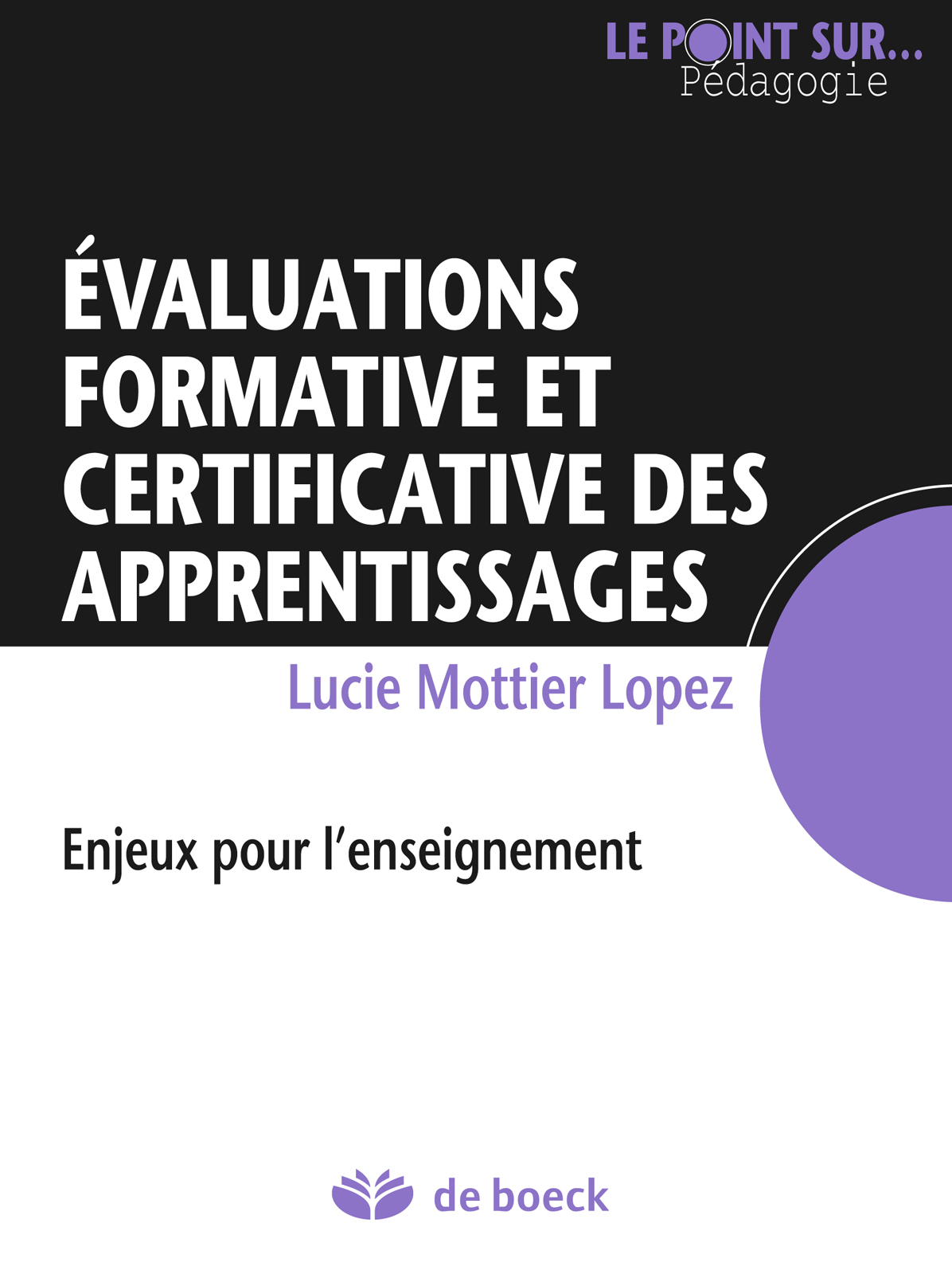
Évaluations formative et certificative des apprentissages
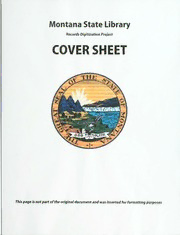
Apprenticeship and training program biennial report for ...

Boletín Oficial de la República Argentina. 2007 2da sección

The crime scene : a visual guide
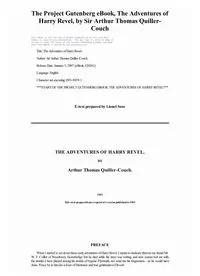
The Adventures of Harry Revel by Sir Arthur Thomas QuillerCouch

Taste of Home September/October 2018
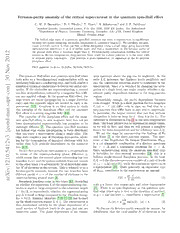
Fermion-parity anomaly of the critical supercurrent in the quantum spin-Hall effect
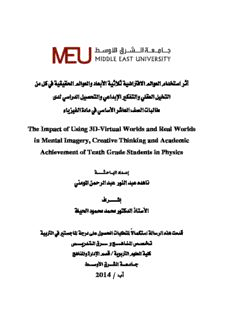
bÈiþ
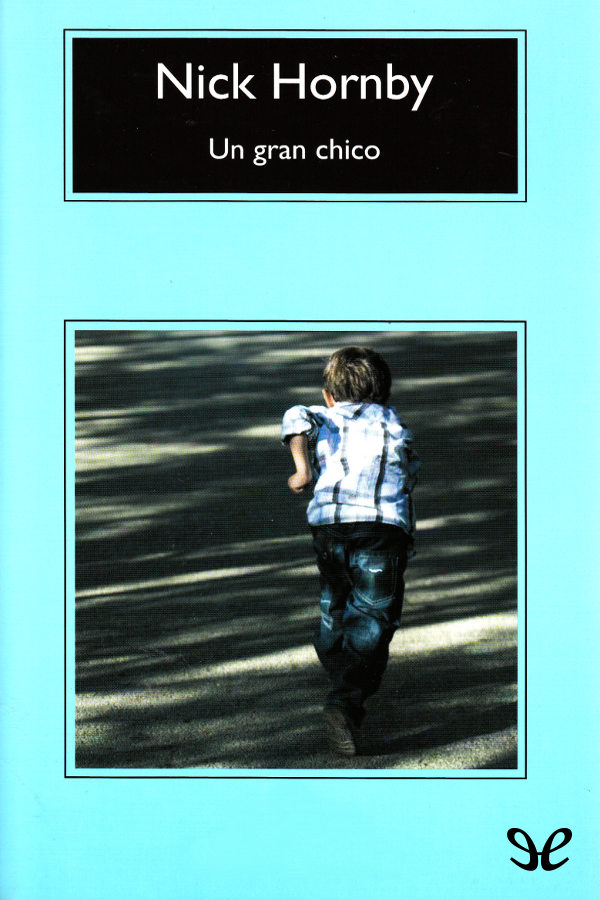
Un gran chico

by Elmor van Staden submitted in accordance with the requirements

TS 125 307 - V5.5.0 - Universal Mobile Telecommunications System (UMTS); Requirements on User Equipments (Ues) supporting a release-independent frequency band (3GPP TS 25.307 version 5.5.0 Release 5)
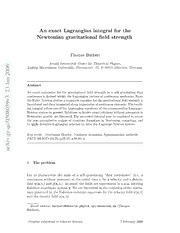
An exact Lagrangian integral for the Newtonian gravitational field strength

3 Winters
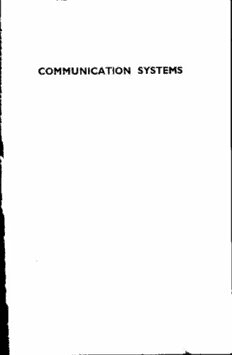
Communication Systems

Index to stories in thematic anthologies of science fiction (A Reference publication in science fiction)

Coffeeand Chicory by P L Simmonds

